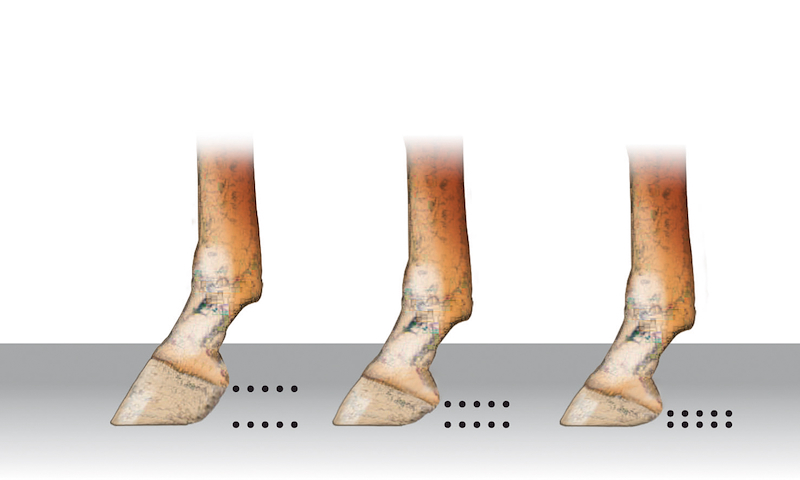Correct conformation: Toed out and toed in
The KWPN pays close attention to correct conformation, which allows the horse to perform its work easily and, as a result, enjoy a long sport career. Correct leg conformation is an important part of this concept. Together with Dr. Harold Brommer of the University Clinic for Horses in Utrecht and inspectors Floor Dröge and Henk Dirksen, we once again shine a light on this subject.
During the judging of the conformation, the jury looks at the horse moving away and towards them on a straight line on hard surface. This procedure allows them to properly evaluate the stance of the front feet, viewed from the front. If the horse’s feet are turned outward, we call this ‘toed out’; conversely, if the feet are turned inward, we call this ‘toed in’. Dirksen: “We always strive for a correct stance, but we sometimes weigh a toed-out stance less heavily, provided that it’s not too severe. We see it as a bigger issue when the front feet are toed in.” Dröge: “We always evaluate a horse for this in the walk. If the horse is standing, it can look very different. It’s especially important that the foot is placed down flat. If the horse loads the outside or inside more, then that’s a problem.” Brommer explains: “This leads to asymmetrical loading of the long pastern-, short pastern and/or coffin joint, resulting in potential accelerated wear and tear. A toed-out or toed-in stance in foals can still be corrected, provided that the stance originates only in the bottom part of the foot, under the long pastern joint. If the rotation starts from the front knee, it shouldn’t be corrected too much because then you only get additional rotation from the lower foot and therefore more asymmetrical pressure distribution on the joints.”
The jury also evaluates hind leg stance relative to the vertical when the horse moves away. If its hocks come very close to one another, it is described as ‘cow hocked’. Brommer: “Unless the hocks really come against one another, it has no clinical consequences. However, it’s less functional; and the horse may develop less power from the hindquarters. You see cow hocks mainly in young, growing horses, which often greatly diminishes as they become bigger and stronger.”
The KWPN pays close attention to correct conformation, which allows the horse to perform its work easily and, as a result, enjoy a long sport career. Correct leg conformation is an important part of this concept. Do you want to know more about a correct conformation? Then order the book 'the KWPN Horse; selection for performance' here. KWPN members order the book for € 19.95 and non-members for € 24.50.























 KWPN Database
KWPN Database KWPN.tv
KWPN.tv KWPN Horses for Sale
KWPN Horses for Sale